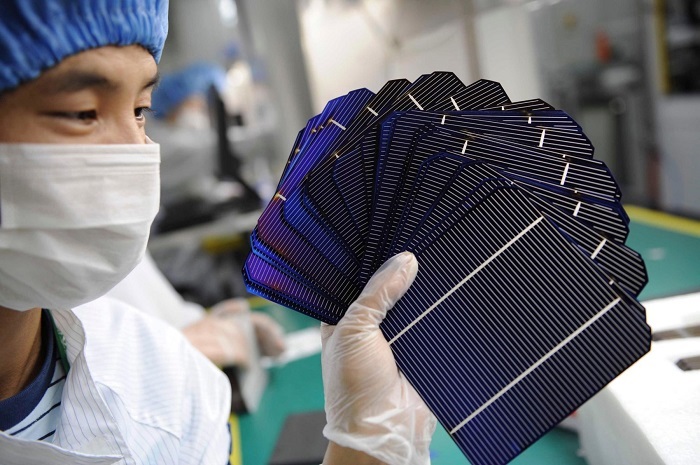
China will easily triple renewables by 2030 – So why didn’t China sign the COP28 global pledge ?
China Dialogue asked experts why China, despite being a world leader in renewables, has not signed the pledge to triple triple renewable power capacity and double energy efficiency by 2030. The general picture they gave is that the tripling is achievable, but the doubling is a sticking point.
Energy efficiency is the size of an economy divided by its energy use. Although China has been making strides in cutting the amount of energy required to produce a unit of GDP, reducing this “energy intensity” a further 4% every year to 2030 would be extremely challenging. This is because China’s economy is still at a stage where it relies on energy-intense sectors such as heavy industry (and which supply Western markets).
At COP28, China Dialogue interviewed the world’s largest photovoltaic (PV) solar firm, LONGi. Founded in 2000, it now has manufacturing or sales operations in over 150 countries and has sold more solar modules than any other firm for the last three years running.
Huo Yan, LONGi’s global marketing head, said the tripling target could act as a spur to countries that had been slower to deploy renewables. For a country like China, already rapidly rolling out clean energy, it was a conservative goal, he added.
“IRENA reviewed international trends in renewable energy and found rapid growth, particularly in solar,” he said. “But over the last five years, we’ve seen some international organisations, including IRENA, make the same mistake when predicting future capacity: they underestimate.”
He told China Dialogue that the global solar market is booming. According to LONGi’s own figures, 38 countries installed 1 GW or more of new PV solar capacity this year.
And, according to data from LONGi and Jinko Solar (China’s second biggest solar firm), they alone have produced a total of 490 GW of solar silicon wafers in their histories, equivalent to almost half of overall installed capacity.
Currently, Chinese manufactures hold 97% of the market for silicon wafers, and 80% of all solar panels are supplied by China. Demand for solar modules is greatest in China, the EU and the US. Recently, the EU and US have moved to repatriate supply chains and put “anti-dumping” and “anti-subsidy” measures in place on Chinese solar power products. These include the EU’s Net Zero Industry Act, Critical Raw Materials Act, and a new Batteries Regulation; and the “Inflation Reduction” Act in the US.
“The EU and US don’t have the manufacturing capacity or the competitiveness. These measures are a huge barrier to solar deployment, and possibly the IRENA renewables capacity target,” said Pan Jiahua, member of the Chinese Academy of Social Sciences, and deputy chair of the National Expert Committee on Climate Change.
____________________________________________________________________
- Extract from China Dialogue, December 13, 2023.